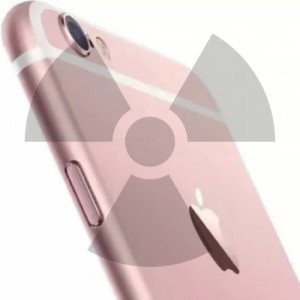Apple Unveils iPhone 6S and 6S Plus SAR Values
Taking in account that 2015 is an S-year, we don’t expect the iPhone radiation levels to considerably diminish or increase. The only difference from the casing point of view is a 0.02 mm increased thickness and the new 7000 Series Aluminum borrowed from the Apple Watch. On the other side, the iPhone 6S comes with faster Internet, faster Bluetooth and better processors. Can they increase the amount of RF radiation absorbed by our bodies when using the iOS devices?
iPhone 6S and 6S Plus SAR Values
Before providing you the maximal RF exposure values, you have to know that the limit is set to 1,6 W/kg measured over 1 gram of tissue. That’s the standard for the United States imposed by the Federal Communications Commission (FCC). There’s also another popular standard required by the European Union (EU) which accepts a radiation of up to 2,0 W/kg averaged over 10 grams of tissue.
Fact: Measurements over 1 gram of tissue tend to have a higher accuracy because they can detect radiation spikes, that could else flatten out within the average, when measured of 10 grams of tissue. This means the U.S. RF exposure limit more rigorous!
Conclusion: There is no signigicant RF exposure limit between the regular iPhone 6S and its oversized sibling the 6S Plus. However, both continue to remain in the upper range of the SAR limitation. This makes us recommend you a few tricks to lower the iPhone radiation that your body is exposed too while performing phone calls.
iPhone 6S vs iPhone 6 SAR Comparison
Now it’s time to compare the two cousins and see if there are any notable differences.
Note: Do mind that the iPhone 6 has two SAR values because of the different models A1549 and A1586.
iPhone 6S Plus vs iPhone 6 Plus Comparison
Now let’s see how the 5,5-inch screen siblings compare:
Fact: Note that all values listed above have been extracted from Apple’s RF exposure information. They represent maximal values, recorded with all wireless and cellular emitters functioning at maximum power. This means active phone call, data usage, Bluetooth connectivity and any other feature that emits RF energy.
Conclusion: The iPhone 6S is a fraction more radiation friendly when compared to its older cousin!
Tip: For more info you can also check our head to head SAR value comparison between all nine iPhone generations. You’ll notice that the RF energy released is significant. There are not studies to prove that an iOS device is harmful when it comes to radiation. However, it’s always better to prevent. One solution is provided by the new Pong Cases which promise to redirect wireless energy away from your body.
iPhone 6S vs Samsung Galaxy S6 SAR Comparison
Last but not least let’s check our how the 2015 iPhone performs in a head-to-head battle with its main competitor, Samsung’s flagship.
Important: Samsung devices are famous for offering low SAR values, however it’s often the case that they excel when complying with the EU limitations and the RF energy is averaged on 10 grams. Nevertheless, when the measurements are taken over 1 gram of tissue, spikes are identified and radiation levels are considerably increased close to the FCC limit.
* Samsung Galaxy S6 Edge Sar values have been extracted from the official website.

